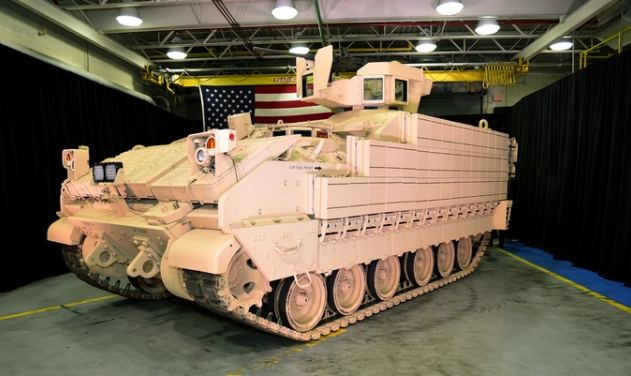US Army Test Fires Miniature Hit-to-Kill Missile From Multi-Mission Ground Launcher

US Army has tested fired Miniature Hit to Kill (MHTK) missile, AIM-9X Sidewinder and Hellfire missile from its new Army Multi-mission launcher (MML).
The interceptor missile is developed to protect forces on the ground by destroying incoming enemy fire from artillery, rockets, mortars, cruise missiles and even drones and aircraft, Scout Warrior reported Monday.
The MML is configured to fire different kinds of weapons; the launcher recently conducted live fire exercises with an AIM-9X Sidewinder missile and an AGM-114 Hellfire missile.
The MML is engineered to fire these missiles which, typically, are fired from the air. The AIM-9X is primarily an air-to-air weapon and the Hellfire is known for its air-to-ground attack ability.
The Multi-Mission Launcher, or MML, is a truck-mounted weapon used as part of a Soldier protection system called Integrated Fire Protection Capability.
The system uses a Sentinel radar and fire control technology to identify and destroy approaching enemy fire and protect forward-deployed forces. The technology uses a command and control system called Integrated Air and Missile Defense Battle Command System, or IBCS.
The MML launcher can rotate 360 degrees and elevate from 0-90 degrees in order to identify and knock out approaching fire from any direction or angle.
"The MML consists of fifteen tubes, each of which can hold either a single large interceptor or multiple smaller interceptors. Developed using an open systems architecture, the launcher will interface to the IBCS Engagement Operations Center to support and coordinate target engagements," an Army statement said.
“We are fully integrated with AIM-9X and Longbow (Hellfire). This is a monumental effort by our PEO family,” Col. Terrence Howard, Project Manager, Cruise Missile Defense Systems Project Office, PEO Missiles and Space said.
The Multi-Mission launcher works in tandem with radar and fire-control software to identify, track, pinpoint and destroy approaching enemy air threats with an interceptor missile.
Indirect Fire Protection Capability Increment 2 Intercept (IFPC Inc 2-I) is a joint collaborative effort between the Army's Program Executive Office for Missiles and Space's Cruise Missile Defense Systems Project Office and the Army Aviation and Missile Research, Development and Engineering Center (AMRDEC).
"This is a capability that, when fully matured and fielded, will match and counter a very wide variety of sophisticated airborne threats. MML will greatly help protect our ground troops from harm's way under the most stressing battle space operating conditions,” James Lackey, Director of AMRDEC said.
Multiple live-fire demonstrations involved Army subject matter experts, industry participants and international partners interested in the systems’ development.
“This is a marked achievement that proves the open systems architecture of the IFPC capability works as designed. We have demonstrated the ability to offer a multiple interceptor solution to defeat multiple threats. True multi-mission capability" Lt. Col. Michael Fitzgerald, IFPC Product Manager.
Weapons development experts have been using telemetry and data collection systems to assess the results of the live fire with an intention to quickly prepare the system for combat use. The weapon should be ready for combat within three to five years.












